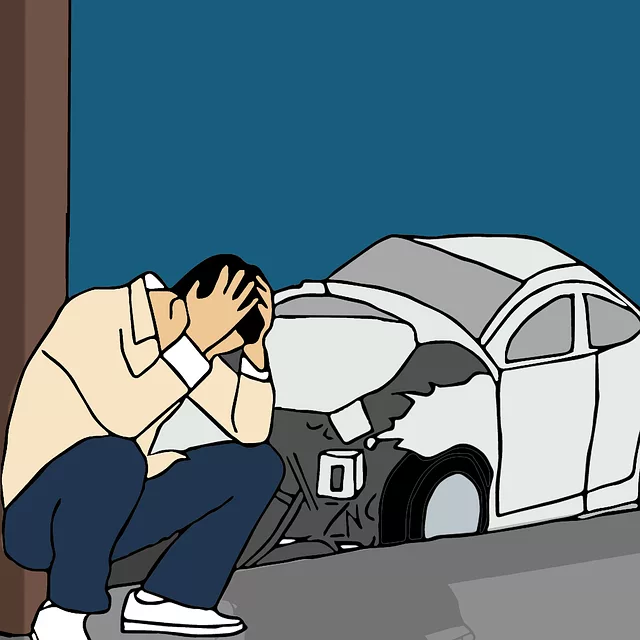In Manhattan, where rideshare safety litigation is prevalent, understanding cyclist right-of-way laws is vital for all road users. Cyclists have equal rights and responsibilities as vehicle operators, including adhering to traffic rules and signals. Motorists must yield at intersections and provide a full lane when passing. Following these mutual recognition practices promotes safer roads, minimizes conflicts, and reduces rideshare safety litigation. Cyclists should stay alert, use hand signals, maintain safe distances, and be aware of local laws regarding bike lanes and right-of-way rules to share Manhattan's roads safely. In the event of an accident due to another party's negligence, cyclists can seek legal recourse under New York City laws regarding rideshare safety litigation.
In Manhattan, navigating the streets as a cyclist comes with unique challenges, especially with the rise of ridesharing services. Understanding your rights and the laws governing cyclist right of way is crucial for safety and protection. This article delves into the legal framework surrounding cyclists in NYC, focusing on rideshare safety and litigation options when conflicts arise. From common misunderstandings to knowing your legal recourse, it’s essential to be equipped with this knowledge to navigate Manhattan’s bustling streets securely.
- Understanding Cyclist Right of Way Laws in Manhattan
- Rideshare Safety and Cyclist Protection
- Common Conflicts and How to Navigate Them
- Legal Recourse for Cyclists: What You Need to Know
Understanding Cyclist Right of Way Laws in Manhattan

In Manhattan, understanding cyclist right of way laws is crucial for both cyclists and drivers alike, especially in light of increasing rideshare safety litigation. New York City has specific regulations that protect cyclists’ rights on the road, ensuring their safety while navigating the bustling city streets. Cyclists are considered vehicle operators and have the same rights and responsibilities as motor vehicle drivers, according to state law.
This means they must follow traffic signals, lane markings, and other rules of the road. In turn, motorists are required to yield to cyclists at intersections and give them a full lane when passing. Recognizing these rights and obligations fosters a more harmonious sharing of Manhattan’s roads, reducing potential conflicts that can lead to litigation.
Rideshare Safety and Cyclist Protection

In Manhattan, rideshare safety has become a paramount concern, especially with the growing number of cyclists sharing the roads with vehicles and pedestrians. Cyclists, already vulnerable due to their exposed position on the road, face an added layer of risk when interacting with rideshare drivers who may be distracted or negligent. This is where clear right-of-way laws come into play, ensuring a more secure environment for everyone. Understanding and adhering to these rules can prevent accidents and potentially reduce Rideshare Safety Litigation.
For instance, cyclists have the right of way at intersections when properly signaled, demanding that drivers yield to them. Conversely, riders must follow traffic signals and ride predictably, using bike lanes whenever available. Such practices foster a culture of mutual respect and responsibility, which is crucial for reducing conflicts on Manhattan’s bustling streets.
Common Conflicts and How to Navigate Them

In Manhattan, where bike lanes and car traffic mix, common conflicts arise for cyclists navigating the city’s dense streets. One frequent issue involves right-of-way disputes at intersections and crosswalks. Bicyclists must be vigilant to assert their right of way while also being respectful of pedestrian crossings. Misunderstandings often lead to aggressive driving or cycling, potentially triggering rideshare safety litigation.
To avoid these conflicts, cyclists should stay alert, follow traffic signals, and use hand signals when turning. Maintaining a safe distance from cars and pedestrians can prevent hasty decisions that might result in accidents. Additionally, understanding local laws regarding bike lane usage and right-of-way rules is crucial for both cyclists and drivers, fostering a more harmonious—and safer—sharing of Manhattan’s roads.
Legal Recourse for Cyclists: What You Need to Know

In Manhattan, cyclists have a right of way in many situations, but understanding their legal protections is crucial for safety and advocacy. If a cyclist is involved in an accident due to another party’s negligence—such as a car driver running a red light or failing to yield—they may have legal recourse. Knowing the local traffic laws and gathering evidence like security footage or witness statements can significantly strengthen a case.
Cyclists should be aware of their rights under New York City laws regarding Rideshare Safety Litigation. If injured, they can seek compensation for medical bills, pain and suffering, property damage, and more. Consulting with an attorney specializing in bicycle accidents is advisable to understand the legal process and ensure the cyclist’s rights are protected throughout the case.
Understanding and adhering to cyclist right-of-way laws in Manhattan is essential for both cyclists and drivers alike. By prioritizing rideshare safety and recognizing common conflicts, you can navigate the city’s bustling streets with greater confidence. If involved in an accident or faced with unjust treatment, knowing your legal recourse through Rideshare Safety Litigation empowers you to protect your rights as a cyclist. Let these insights be your guide to safer, more harmonious cycling experiences in Manhattan.
